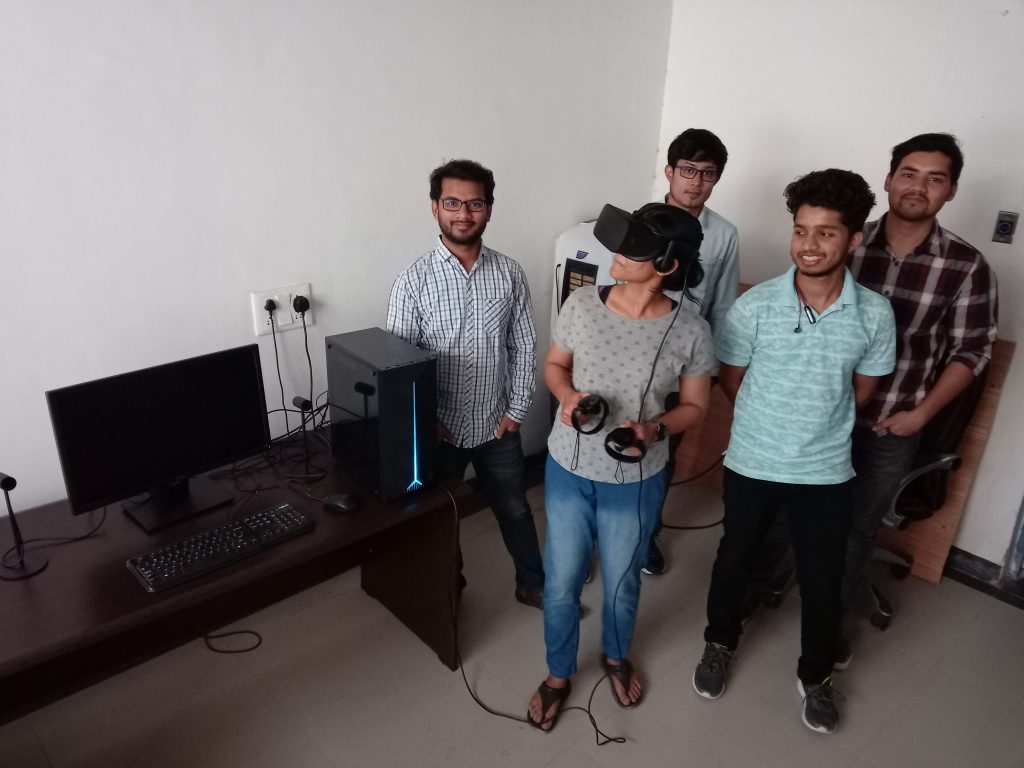

Existing Equipment:
- Two sets of Oculus Rift + Touch Virtual Reality Systems
- Two customized desktops with compatible graphics cards
- Two large screens
At DAASE, IIT Indore, we have built a Virtual Reality based Data Observatory (VDO) located at Room 402 in POD 1E for the applications in Astronomy, Space Sciences and Engineering. It has the following aspects —
- Teaching:
The VDO aids to the teaching in Astronomy M.Sc. programme and the Minor programme in astronomy by introducing complicated astrophysical/cosmological concepts through interactive VR experiments. Astronomy experiments through VR are being used by the leading universities around the world for their respective Master’s programme in Astronomy. One such programme is run by the Uppsala University in Sweden. Prof. Erik Zackrisson from Uppsala University has developed these VR based astronomy experiments for their Master’s course, which has become extremely popular among the students there. He is one of our existing collaborators through a SPARC project and had visited IIT Indore in January 2020. He is actively collaborating with us to develop several VR based experiments for the M.Sc. in Astronomy and the Astronomy Minor courses. We have already started with three existing experiments in VR, and will develop new ones in due course. The experiments that are being demonstrated are documented here. - Research Applications:
Research in Astronomy, Space Science and Engineering has entered into a new data-intensive era. Many of the upcoming next generation telescope e.g. Square Kilometre Array (SKA), Thirty Meter Telescope (TMT)– two of the seven international mega science projects in which India is a major partner and which has been highlighted by the recent nationwide Vigyansamagam (https://www.vigyansamagam.in/) exhibitions organized by DST, DAE and PMO; AstroSat (India’s first dedicated astronomy satellite), upcoming Aditya-L1 (India’s first Solar satellite mission) etc. are going to generate a humongous amount of observational data (SKA alone will produce ~5 zettabytes of data per year). Further, numerical simulations for cosmology, astrophysics and space sciences are also getting heavier with time. Both observed and simulated data have a large number of complex parameters which makes them even more difficult to visualize, analyze, and comprehend. Virtual Reality based platforms have come up as an innovative avenue to visualize this multidimensional raw data, its further analysis and understanding, and visualizing the statistical inference drawn from such analysis of the BIG data. The VDO will help us to achieve these goals in the following manner —
a) By providing a platform for developing novel methods to visualize multidimensional data
b) To help us in identifying the possible scope of improvements in complex numerical models of cosmology and astrophysics.
c) By providing a platform for visualization of statistical inference of data analysis in multidimensional parameter space.
d) By aiding chance discoveries from raw observations through better visualization. - Public Outreach:
The VDO is enriching the already existing various public outreach activities organized by DAASE. It is helping us to create more enthusiasm among the public regarding Astronomy. Using the VDO, school students or the general public can see what will happen if they “Destroy the solar system” or how can they “Create their own star cluster” etc.